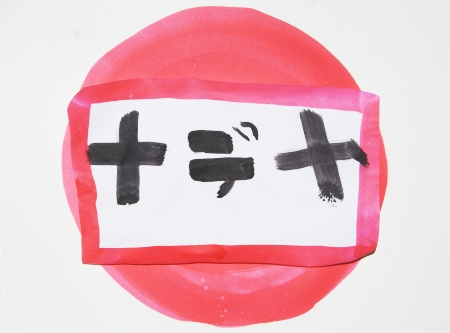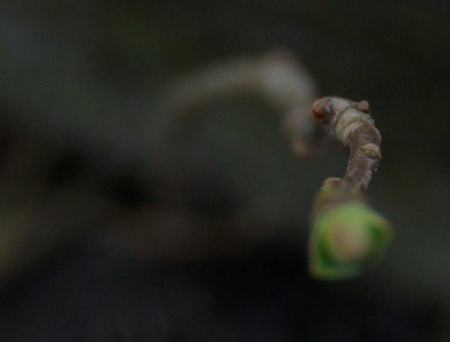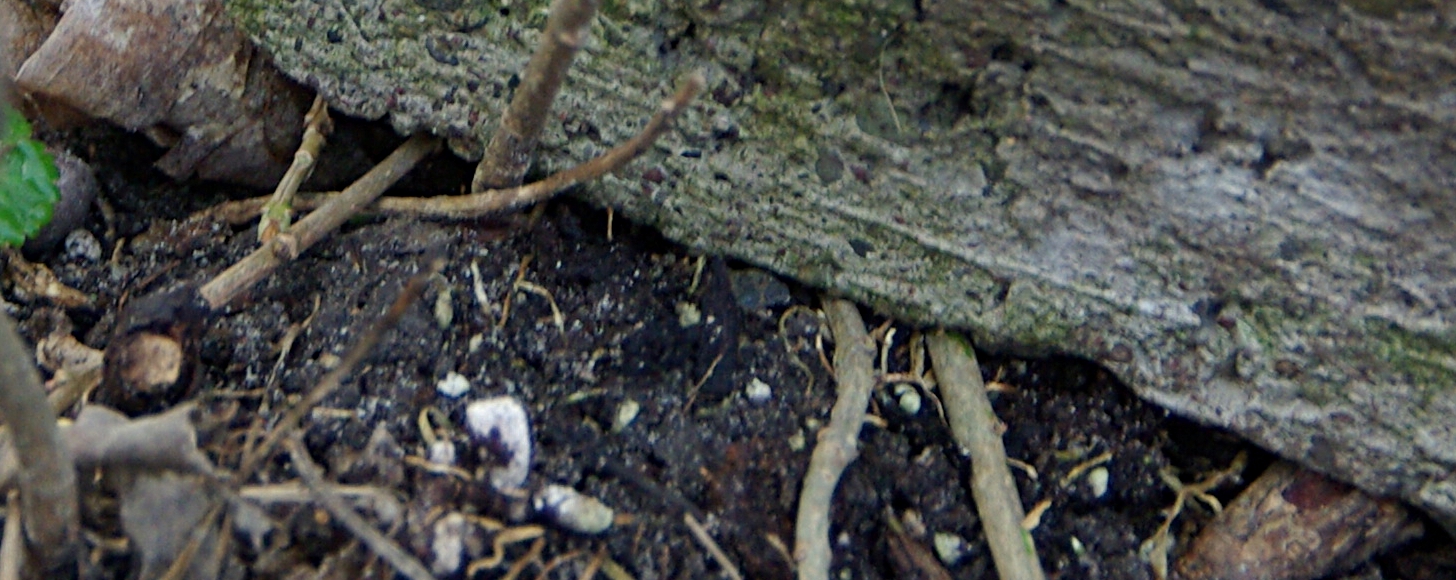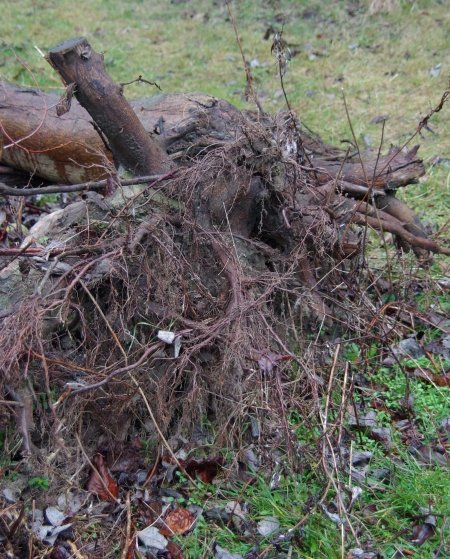personal note
March 1st, 2008
We will be soon at Kyushu University in Fukuoka Japan, so blogging will be in the beginning of our stay probably down to zero. I just bought me a book on japanese writing. Above you can see how I try to work out my name with Katakana.
->Looks quite helpful, but Kanji takes too much energy at the moment: the Kanji-website.
Soheil Nasseri at the Philharmonie Berlin
February 28th, 2008Yesterday I was at pianist Soheil Nasseri’s debut in the Berlin Philharmonie. I saw an earlier concert of him lately and thus I was curious how his performance would be this time.
Scientific Methods and the Validation of Scientific Questions
February 26th, 2008I am currently putting together a pdf document with the title: On the need for a global academic internet platform. In this randform post you can find the first section. The therein contained links are leading to posts, which partially went into the below section or which will go into the third section.
Hence below is an excerpt of the pdf Draft containing some new arguments for such a platform and a little of the old arguments. In particular the suggestions for a workflow (scroll down to last subsection) are mostly new. Again-I put this here on the blog in order to encourage discussion about it.
Noahs Ark
February 26th, 2008According to this BBC report the Svalbard International Seed Vault, also entitled as “Noahs Ark” or “doomsday vault”, is scheduled to be formally opened on 26 February. According to the seed vaults website:
The Svalbard Global Seed Vault, which is currently being established in the permafrost in the mountains of Svalbard, is designed to store duplicates of seeds from seed collections from around the globe. Many of these collections from developing countries are in developing countries. If seeds are lost, e.g. as a result of natural disasters, war or simply a lack of resources, the seed collections may be reestablished using seeds from Svalbard.
Every good gardener knows that fragile plants need to be saveguarded from agressive exponentially growing weeds. (via beton und garten). And if things are out of balance people in Germany are confining them sometimes with what is called a Rasenkantenstein (see above image).
Due to the rapid climate change again mostly fragile plants are dying and thus biodiversity is on the decline, which made the Svalbard International Seed Vault necessary. Frankly speaking I think the vault is rather a grave, as I am not sure wether the seeds would survive under new circumstances.
And unfortunately I am rather pessimistic wether the above Berlin bud (top image which is of today!) is going to survive, looking at the very likely future frost.
Below some images of the shoots of a syringa heidge by G. Mein entitled: “Vor Hecken schützen”:



pathway – making wikipedia a no-brainer
February 25th, 2008 “no nodes and ways in the paths of a root“, image by —|.
“no nodes and ways in the paths of a root“, image by —|.
Dennis Lorson an Electrical Engineering/CS student at the Catholic University of Leuven, Belgium is currently looking for suggestions of how to enhance his program pathway, which is a graph vizualisation programm, which is displaying among others the various radii of information retrieval (screenshot demonstration).
From the website:
It accomplishes this by presenting you with a graphical “network” representation of your visited article pages. A node represents an article, a connection between two nodes means, of course, that you’ve gone from the first article to the second one. You can save the network you’ve created to disk and recover it.
This way, you’re able to keep track of everything: what you’ve looked at, how you got there and just how it all fits together.
via
metaportaldermedienpolemik
other wikipedia visualization links via IBM’s Visual Communication Lab
Mathematics Awareness Month 2008
February 23rd, 2008The American mathematical society, the American Statistical Association, the Mathematical Association of America, and the Society for Industrial and Applied Mathematics announced that the theme for Mathematics Awareness Month 2008 is Math and Voting. Among others the AMS has on their news website also a link to a newsweek article by Sharon Begley and to the mathawareness campaign itself, which includes a very easy to understand demonstration on how different voting systems lead to different results. In particular the difference between a pure ranking system and a system, where one assignes weights/values to the choice like in method 2 (approval voting) or method 3 as a special case of Instant-runoff voting is displayed.
see an electron move
February 22nd, 2008scientists at Lund University have made a film of the energy distribution of an electron riding a light wave using attosecond laser pulses.
via physorg.com
Academic communication and representation and political processes
February 20th, 2008I am currently putting together arguments and structural comments (concerning realizability etc.) for a global academic platform which is organized as a kind of “global scientific parlament”. Some arguments were introduced in past blog posts (please see here and the corresponding links therein). A pdf document is on its way, regardless wether there is an interest in it or not. Comments are highly welcome….especially from bee, who made a comment to an earlier post!! this thing here needs a critical review.
The following text puts an emphasis on the representative character of such a platform:
In the last years internet communication has taken a leading role in overall societal life. This holds not only true for the western world, but is more and more also evident on a global level.
New forms of social networking and social communities grew within no time, partially furthered by networking tools, such as wiki’s, blogs, cvs repositories, commercial networking sites (e.g. myspace, facebook, xing) or other forms of community forming platforms reaching from online gaming platforms like world of warcraft, over environments such as second life, and online learning platforms to customer services of online stores.
Political life has partially merged into this process. Every major political party has at least a website. Political leaders have their own website. International organisations have their websites etc. Political messages are distributed not only via custom media, like newspapers, TV stations but more and more often via politically colored blogs or directly on media such as youtube.
Political communication platforms such as the World Economic Forum, Fora.tv etc. provide meeting and information spaces.
However academic life, which had online networking tools long before the internet and whose networking tools (like the html format, server architecture etc) laid the grounds for the current boom takes an astonishingly hidden role in this development.
Universities of course have their own website. Moreover a great deal of academic life takes place online. Online registrations, augmented learning, student networks, research overviews, publication lists, lecture notes etc. are almost standard at every bigger university. Moreover university members
take part in investigations or provide information for foundations and political and ecomomic institutions (like the IPCC) and thus they play a strong role in the political communication process. However all these contributions are rather hidden. Even in cases where the participation of academic members is emphasized these are usually mentioned in diffuse terms like “leading climate scientists” or “experts in genetic engineering”.
Another important hidden role of academia is the contribution to knowledge accumulation within the internet. This is not only provided via the university portals, but by the participation of university members in collaborative environments such as wikipedia.
In stark contrast to this there is an often strong neglectance of academia and educational institutions in politics. This neglectance takes on various forms. It may be as direct as budget cuts for research and educational institutions or it may be more subtle with methods reaching from restraining the autonomy of universities, interference of politics in academic processes with ideas like “elite formation” to concrete structural desicions like employment and funding regulations.
These political measurements take usually place on a national basis, although research is highly international.
The international organizations which are devoted to represent educational institutions like the UNESCO provide informations on educational topics, in part also on research content, they provide tools for collaborations, however they are mediators, moreover their mediating role is usually limited, which results e.g. in predefined priorities.
Similar things hold true for Science organizations, i.e. they represent scientific life to a certain degree and mediate between academia and society. This role is important however not exhaustive enough.
In particular the “weakness” of science organisations to represent educational institutions has a structural reason. On one hand it is the relatively small organisatorial size (like the UNESCO Sciences Sector has about 200 staff members (which could be small if you are looking for a direct adressee to set up on a science related question)) on the other hand it is the very role as a mediator which diminishes the influence of a science organization.
The above should serve as a fast explanation that there is and why there is a certain lack of a direct active representation of academia and academic questions in societal life. Such a representational lack could -at least in part- be filled by an official academic platform, which is directly and globally run by all (or almost all) educational institutions.
hallusions
February 19th, 2008the band tonrand, which was already fetured in this randform post with their song “not me” has now a website on last.fm, where they published their latest song: hallusions (lyrics, vocals, music: Cat Caspari, music, arrangement: Niko Lai).
addition 26.02.13: The tonrand profile on last.fm had been erased. The music is no more available.